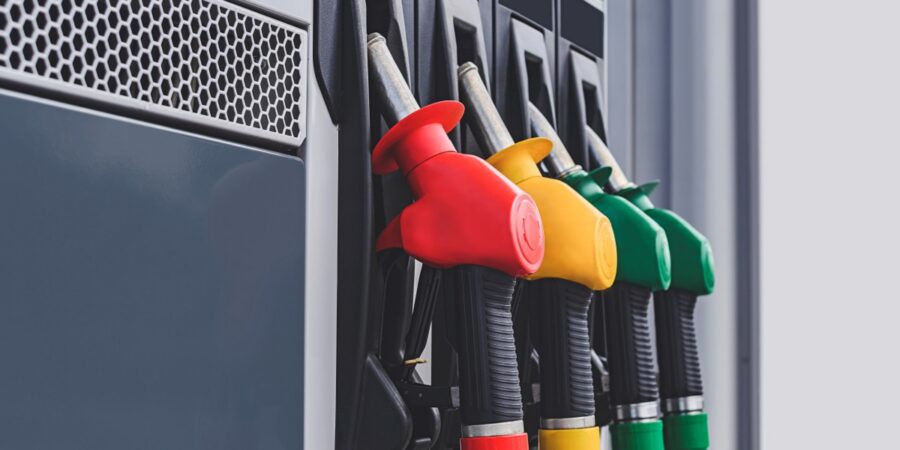
Our Blog
How to Improve Your Company’s Supply Distribution Efficiency
5 Min Read
Written by: Power Digital
The pandemic forced the supply chain into the spotlight. With the supply chain challenges of the early days of COVID in the rearview, the focus now is to make supply chain management more efficient, stable, and resilient. This post will take a look at critical strategies to improve your supply distribution management efficiency.
Six Challenges Industrial Distributors Are Facing
As a key distribution channel, industrial distributors continue to face challenging times, with pressure on the business from many directions.
- Labor Shortages – Worker shortages are easing but remain challenging for many distributors. There also appears to be a potential mismatch between workers’ skills and job opportunities. Further, early retirement took many potential employees out of the labor market during COVID.
- Supply Chain Challenges – Although it’s easy to assume that supply chain disruptions are over, material scarcity, increasing freight prices, and demand forecasting impact the entire supply chain. Further, port congestion continues to plague the industry.
- Disintermediation – Simply put, suppliers are looking to bypass industrial distributors by creating their own direct-to-consumer online platforms. In a 2022 study, 70% of suppliers with proprietary distribution channels said they expected their share of direct-to-customer sales to grow by 2027.1
- Customer Expectations – The pandemic permanently changed consumer expectations, which, in turn, are translating into elevated B2B demands. Customers want faster response times, greater accessibility, value-added services, and a better customer experience. In fact, 80% of B2B customers expect responses and interactions in real time.2
- New Competitors – The competition is expanding in various markets, as known distribution participants branch out and major B2C e-commerce firms move into B2B operations.
- Technology – Tech advancements are revolutionizing distribution management, making omnichannel a norm, enhancing sales via analytics, and bettering supply chain management, distribution channel planning, and logistics through AI and machine learning.
Why is Supply Distribution Efficiency Important?
Supply chain efficiency is essential because it boosts sales and margins, increases customer satisfaction and loyalty, and results in better inventory management, faster processing, and shorter delivery times.
The wholesale/distributor market topped $8.2 billion in 2022.3 But industrial distributors do more than move goods from point A to point B. Savvy distributors find a competitive advantage by assisting customers in locating and evaluating goods prior to purchase.
How to Improve Supply Distribution Efficiency
Improving supply distribution efficiency often requires a significant investment; however, the ROI is often substantial. Here are some best practices to consider implementing to improve your supply distribution efficiency:
Improve Warehousing Systems
Warehouse automation simplifies processes, saving time and reducing errors in distribution center logistics. A good Warehouse Management System (WMS) allows for managing and tracking inventory in real-time, boosting warehousing productivity and accuracy.
Lowe’s Home Improvement, for instance, is innovatively tackling its supply chain efficiency by opening more warehouses that serve as storage centers for off-season merchandise. Leveraging warehouses in this manner allows for lower transportation costs, faster store delivery, and higher margins, as out-of-season goods no longer have to be discounted. As part of its $1.7 billion supply chain overhaul, Lowe’s has added about 16 million square feet of distribution center space to its logistics operations over the past five years.4
Develop eCommerce and Omnichannel Strategies
The time to embrace digital tools is now. “Compared to our peers, we rank at six or seven out of ten on digital capabilities, but the industry as a whole is 20 years behind,” one automotive part distribution expert explained to McKinsey & Co.5 The timeline for adopting new technology is so slow that 14% of distributors still rely on manual spreadsheets for planning!
Waiting for the “perfect” solution before embracing a new digital strategy is often an exercise in futility; technology is always getting better, faster, and cheaper. The best recommendation is to analyze use cases and select one solution or hire one expert with one particular goal. “You are one good person from success in any given organization,” explained one executive.6 For example, Grainger, bumped the percentage of sales initiated through digital channels from 15% in 2005 to 75% in 2021.7
Consolidate and Partner
In such a fragmented industry, it might make sense to consider merging or partnering with other players who offer value-added services. Distribution deals today are almost double the size they were five years ago.8
As discussed earlier, the B2B customer is looking for innovations similar to those in the B2C sector. For instance, OneRail, a leading provider of solutions in last-mile fulfillment, and Parcel Pending by Quadient have recently partnered to provide smart lockers as part of an omnichannel solution for a fast and seamless delivery management. In this case, the Parcel Pending by Quadient smart locker systems can be easily integrated into distributors’ current order fulfillment procedures with OneRail’s Omnipoint platform. This allows industrial distributors to provide their customers with dependable and efficient delivery options, like same-day direct-to-job-site delivery, while giving gig delivery drivers more flexibility to pick up items of any size without clogging up order collection lines or compromising the branch location’s aesthetic appeal. Distributor partners can sometimes tap into sustainable delivery methods, such as electric trucks or bikes, for last-mile fulfillment.
Operationally, the integrated solution allows same-day or standard delivery drivers to scan a code with their smartphone to retrieve products from an electronic locker around the clock, avoiding the laborious and traditional process of waiting in line behind other customers or delivery drivers, or waiting for the store associate to locate and stage orders. This new partnership also benefits distributors by freeing up time for associates to perform other valuable tasks, such as helping customers in the branch location or other vital warehouse operations.
The industrial distribution sector is undergoing a significant transformation. Companies that overcome supply chain issues, embrace digital transformation, hire effectively, and consolidate (where appropriate) will lead the future of this new era in distribution.
Ready to learn more about how parcel lockers can improve your company’s supply distribution efficiency? Contact one of our parcel management experts today.
Sources:
- Abdelnour, A., Heriford, B., Daniels, B., et al. Lessons from transformers: How some distributors reset and won. www.mckinsey.com. February 21, 2023. https://www.mckinsey.com/industries/industrials-and-electronics/our-insights/lessons-from-transformers-how-some-distributors-reset-and-won
- Bromfield, P., Gujral, A., Korsch, M., & Rogalski, A. Industrial Distribution: Opportunities to for Differentiation and Growth. www.lek.com. July 12, 2023. https://www.lek.com/insights/ind/us/ei/industrial-distribution-opportunities-differentiation-and-growth
- Ibid.
- Young, Liz. Lowe’s Opens Warehouses to Stow Goods to Improve Seasonal Distribution Efficiency. www.wsj.com. March 8, 2023. https://www.wsj.com/articles/lowes-opens-warehouses-to-stow-goods-to-improve-seasonal-distribution-efficiency-13404404
- Browne, T., Filyanova, I., Panikkar, R., & Sachs, K. Operational efficiency: A clear path to outperformance in distribution. www.mckinsey.com. May 15, 2023. https://www.mckinsey.com/industries/travel-logistics-and-infrastructure/our-insights/operational-efficiency-a-clear-path-to-outperformance-in-distribution
- Ibid.
- Bromfield, P., Gujral, A., Korsch, M., & Rogalski, A. Industrial Distribution: Opportunities to for Differentiation and Growth. www.lek.com. July 12, 2023. https://www.lek.com/insights/ind/us/ei/industrial-distribution-opportunities-differentiation-and-growth
- Abdelnour, A., Heriford, B., Daniels, B., et al. Lessons from transformers: How some distributors reset and won. www.mckinsey.com. February 21, 2023. https://www.mckinsey.com/industries/industrials-and-electronics/our-insights/lessons-from-transformers-how-some-distributors-reset-and-won





